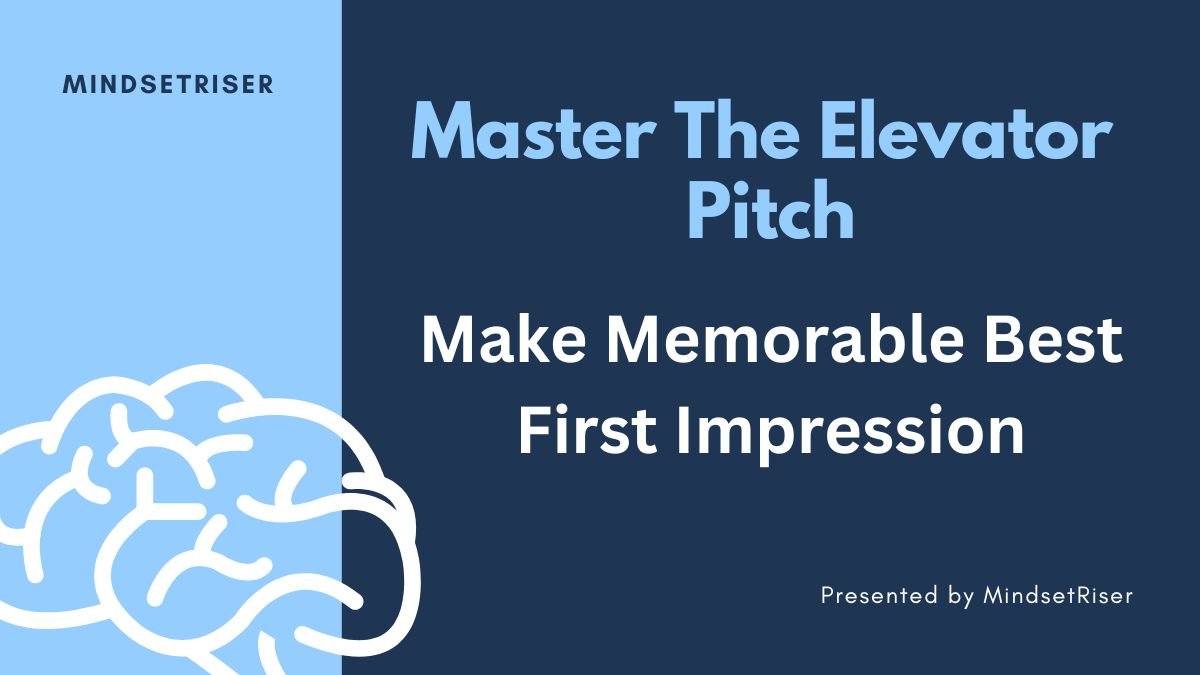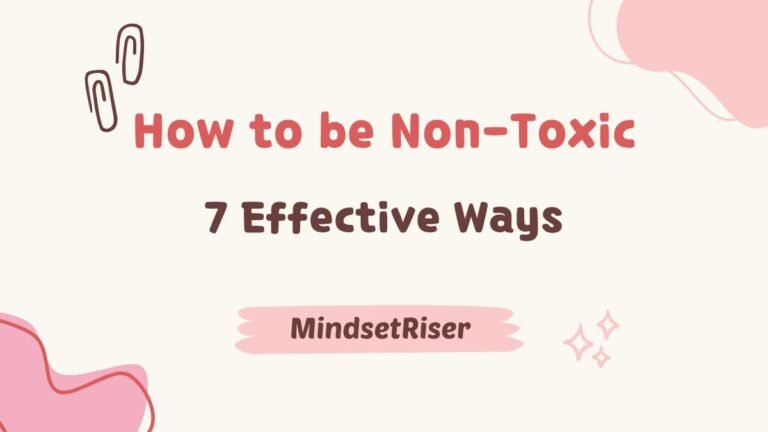Mastering the Elevator Pitch: How to Make a Memorable First Impression
Introduction: Mastering the Elevator Pitch In today’s fast-paced world, you don’t always get a lot of time to make a great first impression. Whether you’re at a networking event, a business meeting, or a social gathering, having a well-crafted elevator pitch can be the key to capturing someone’s attention and sparking a conversation that could…
Introduction: Mastering the Elevator Pitch
In today’s fast-paced world, you don’t always get a lot of time to make a great first impression. Whether you’re at a networking event, a business meeting, or a social gathering, having a well-crafted elevator pitch can be the key to capturing someone’s attention and sparking a conversation that could lead to future opportunities.
An elevator pitch is a concise, persuasive speech that you can deliver in the time it takes to ride an elevator—hence the name. It’s designed to quickly convey who you are, what you do, and what makes you stand out. Perfecting your elevator pitch is essential for making memorable first impressions and turning fleeting encounters into lasting professional relationships.
In this article, we’ll explore how to craft an effective elevator pitch, common mistakes to avoid, and tips for delivering it confidently. Whether you’re looking to promote your business, land a job, or just introduce yourself more effectively, mastering the elevator pitch will give you the tools to succeed.
2. What is an Elevator Pitch?
An elevator pitch is a brief and compelling introduction to who you are, what you do, and why it matters—all delivered in the time it takes to ride an elevator, typically 30 to 60 seconds. The concept originated from the idea that you should be able to explain your business or personal value proposition quickly enough to engage someone during a short elevator ride.
The core purpose of an elevator pitch is to make a strong, memorable first impression without overwhelming the listener with too much detail. Whether you’re talking to a potential client, employer, or networking contact, an elevator pitch provides a succinct summary of your strengths, expertise, and what you can offer.
Why is it Important?
An elevator pitch is more than just a sales tool; it’s about quickly establishing your personal brand and catching the listener’s attention. Here are some key reasons why mastering the elevator pitch is essential:
- First Impressions Matter: You often only have a few moments to impress someone. A well-crafted pitch ensures you make the most of that time.
- Opportunities Are Everywhere: You never know when you’ll bump into a key contact who could help you. An elevator pitch prepares you for any opportunity.
- Clarity and Confidence: Having a polished pitch makes you sound more confident and clear about what you do, which can leave a lasting impression.
Ultimately, your elevator pitch is about opening doors, sparking curiosity, and encouraging further conversation. It’s not about delivering a hard sell but rather about engaging your listener in a way that makes them want to know more.
3. The Key Elements of an Effective Elevator Pitch
A successful elevator pitch isn’t just a casual introduction; it’s a strategic, concise statement that sparks interest. To craft an effective pitch, focus on these key elements that will ensure you communicate your value clearly and leave a lasting impression.
1. Concise and Clear Messaging
The most important aspect of an elevator pitch is brevity. You only have a short time to make an impact, so it’s crucial to deliver your message clearly and efficiently. Avoid unnecessary details and focus on the core of what you do. Remember, the goal is to keep it simple yet impactful.
- Tip: Aim for a pitch that lasts around 30 to 60 seconds—just long enough to provide a snapshot of your skills, services, or goals.
2. Value Proposition
Your elevator pitch should quickly explain what sets you apart from others and why the listener should care. This is your value proposition—the unique benefit or solution you bring to the table. Focus on what you do best and how it can help the person you’re speaking to. This could be solving a problem, providing expertise, or offering a valuable service.
- Example: “I help small businesses improve their digital marketing strategies by increasing their online presence and driving traffic to their websites.”
3. Engaging Hook
An engaging hook is the attention-grabber at the beginning of your pitch. It’s your chance to make the listener stop and think, “I want to hear more.” Start with something that piques curiosity or addresses a common challenge the listener can relate to. A strong hook makes your elevator pitch memorable and sets the stage for a conversation.
- Example: “Did you know that 90% of small businesses struggle to increase their online visibility? I work with business owners to change that.”
4. Call to Action
A great elevator pitch doesn’t end without a clear next step. This is where you invite the listener to take action—whether it’s setting up a meeting, exchanging contact details, or scheduling a follow-up call. Make sure to guide the conversation towards what you want to happen next.
- Example: “If you’d like, I can send you some tips on how to boost your business’s SEO strategy. How about we schedule a call next week to discuss?”
The key is to ensure that after hearing your pitch, the listener knows exactly what the next step is.
4. Steps to Craft a Winning Elevator Pitch
Crafting an effective elevator pitch involves more than just thinking up a few sentences. It requires careful consideration of your audience, message, and delivery. Follow these key steps to create a winning elevator pitch that will leave a memorable impression.
1. Know Your Audience
Before you start crafting your pitch, it’s important to understand who you are speaking to. Different situations and audiences require different approaches. For example, a pitch to a potential client will emphasize how your services solve their problems, while a pitch to an investor will focus on the potential return on investment.
- Tip: Tailor your message to resonate with the listener’s needs, interests, or pain points. The more relevant your pitch is to the person you’re speaking to, the more likely they will engage with you.
2. Structure Your Pitch
An effective elevator pitch has a clear structure that makes it easy for the listener to follow. Use this simple framework to craft your pitch:
- Opening Statement: A brief introduction about who you are and what you do.
- Value Proposition: Explain what sets you apart and the benefits you offer.
- Call to Action: Invite the listener to take the next step, such as a meeting or follow-up.
A well-structured pitch flows naturally and keeps the listener engaged without overwhelming them with information.
- Example:
- Opening: “Hi, I’m Jane, a digital marketing expert specializing in SEO.”
- Value Proposition: “I help e-commerce businesses increase their website traffic and sales through effective SEO strategies.”
- Call to Action: “I’d love to chat more about how I can help your business grow. Let’s set up a time next week.”
3. Be Authentic
Authenticity is key when delivering your elevator pitch. Your pitch should reflect your true personality and style, so avoid sounding too rehearsed or robotic. Let your passion for what you do come through, and make sure the pitch feels genuine. An authentic delivery will resonate with your listener and help you build trust.
- Tip: Don’t try to be someone you’re not. Be confident in your expertise, but let your unique personality shine through in your pitch.
4. Practice Makes Perfect
Once you have a draft of your elevator pitch, practice it as much as possible. The more you rehearse, the more natural it will sound. This will also help you refine your wording and ensure you can deliver the pitch confidently, even under pressure. Practice in front of a mirror, with a friend, or by recording yourself.
- Tip: Rehearse your pitch until you can deliver it smoothly without relying on notes. If you’re comfortable, practice it in real-life situations to get feedback and make adjustments.
5. Common Elevator Pitch Mistakes to Avoid
Even the best-crafted elevator pitches can fall flat if common mistakes are made. To ensure your pitch stands out in a positive way, it’s important to be aware of these pitfalls and how to avoid them.
1. Overloading with Information
While it’s tempting to pack as much information as possible into your elevator pitch, this can actually overwhelm your listener. A pitch that’s too detailed or complicated will lose their interest. Instead, focus on the key aspects that make you unique and the value you bring, leaving the additional details for follow-up conversations.
- Tip: Stick to the essentials. Focus on your value proposition and how you can solve the listener’s potential problem or fulfill a need.
2. Lack of Focus
Rambling or going off-topic during your pitch can quickly dilute its impact. The purpose of an elevator pitch is to spark curiosity and interest in just a few sentences. If you meander or try to cover too many areas, the listener might lose track of what you’re offering.
- Tip: Keep your pitch tightly focused on one key idea, whether it’s what you do, who you help, or how you can add value.
3. Failure to Engage
An elevator pitch isn’t a one-way street—it’s a conversation starter. If your pitch feels like a rehearsed monologue, it can disengage your listener. Instead, strive to make the pitch interactive. Ask questions, spark curiosity, or create a conversation that invites follow-up.
- Tip: End your pitch with an engaging question or statement that encourages the listener to ask about your work, like “I’d love to share more about how I helped a similar business increase their revenue.”
4. Too Much Jargon
Using technical jargon or industry-specific terms can alienate your listener, especially if they are not familiar with your field. Your elevator pitch should be clear and easily understood by someone with no prior knowledge of your area of expertise.
- Tip: Simplify your language. Avoid jargon and focus on communicating your message in a way that anyone can grasp, regardless of their background.
6. Tips for Delivering Your Elevator Pitch with Confidence
A well-crafted elevator pitch is only effective if it’s delivered with confidence and clarity. How you present yourself can be just as important as what you say. Here are some key tips for delivering your elevator pitch in a way that will leave a strong, positive impression.
1. Body Language
Your body language speaks volumes about your confidence and professionalism. Stand tall, make eye contact, and use open, approachable gestures. A firm handshake (if in person) and relaxed posture will help convey that you are confident and ready to engage.
- Tip: Avoid crossing your arms or fidgeting, as these actions may convey nervousness or discomfort. Focus on maintaining a calm and open demeanor.
2. Tone and Pace
The tone of your voice can greatly influence how your pitch is received. Speak clearly, at a moderate pace, and with enthusiasm. A monotone voice can make your pitch sound unenthusiastic, while speaking too quickly can make it hard to follow.
- Tip: Aim for a conversational tone. Vary your pitch and pace to emphasize important points, and remember to pause briefly between sentences to let your message sink in.
3. Personalize Your Pitch
While it’s important to have a structured elevator pitch, you should also adapt it to each situation. Whether you’re at a networking event, a job interview, or meeting a potential client, tweak your pitch to align with the specific context and needs of the listener.
- Tip: If possible, incorporate something personal or relevant to the person you’re speaking with, such as a mutual connection or a recent trend in the industry. This can create a stronger connection and make your pitch feel less scripted.
4. Handling Nerves
It’s natural to feel nervous when delivering your elevator pitch, especially when speaking to someone important. To combat nerves, take deep breaths before speaking, and remember that everyone experiences these moments. Confidence grows with practice, so the more you rehearse your pitch, the more comfortable you’ll become with delivering it in any situation.
- Tip: Try a few calming techniques, such as deep breathing or visualization, before you deliver your pitch to help reduce anxiety and boost your confidence.
7. Examples of Elevator Pitches for Different Scenarios
Crafting a great elevator pitch depends on the context in which you’re delivering it. Below are some examples of elevator pitches tailored for different scenarios, illustrating how you can adapt your pitch to fit the situation and audience.
1. Business Networking Event
When you’re at a business networking event, you want to introduce yourself and offer a value proposition that resonates with potential clients or collaborators.
- Example:
- Opening: “Hi, I’m Alex. I run a marketing consultancy specializing in helping small businesses grow their online presence.”
- Value Proposition: “We provide customized SEO and social media strategies that drive traffic and increase conversions.”
- Call to Action: “I’d love to learn more about your business and explore how we can collaborate. Let’s exchange contact info and set up a time to chat.”
2. Job Interview
In a job interview, your elevator pitch is your chance to summarize your qualifications and what makes you a great fit for the role.
- Example:
- Opening: “I’m Jane, a data analyst with over 5 years of experience helping companies use analytics to drive decision-making.”
- Value Proposition: “I specialize in data visualization and predictive analytics, and I’ve helped businesses reduce costs and improve efficiency by uncovering key insights.”
- Call to Action: “I’d love to discuss how I can bring my expertise to your team and help you achieve your goals. Do you have time for a follow-up conversation?”
3. Investor Pitch
If you’re pitching to an investor, your elevator pitch needs to focus on your business idea, its potential for growth, and why it’s a worthwhile investment.
- Example:
- Opening: “I’m Mike, the founder of GreenTech Innovations, a startup focused on sustainable energy solutions.”
- Value Proposition: “We’ve developed a low-cost, energy-efficient technology that reduces household energy consumption by 30%, and we’re already in talks with major distributors.”
- Call to Action: “We’re looking for investors to help scale our operations. I’d love to share our business plan and discuss how you can be part of this exciting growth.”
4. Casual Introduction
Not all elevator pitches are formal. Sometimes, you just want to introduce yourself in a casual setting. This pitch is more conversational, but still includes key elements like who you are, what you do, and why it matters.
- Example:
- Opening: “Hey, I’m Sarah. I run a small art studio where I teach creative writing workshops.”
- Value Proposition: “I help people unlock their creative potential and tell their stories through writing.”
- Call to Action: “If you’re interested, I’d love to share more about my upcoming workshops. Let’s connect!”
Conclusion
Mastering the elevator pitch is a powerful skill that can help you make meaningful connections, spark professional opportunities, and leave a lasting impression. By crafting a pitch that is clear, concise, and engaging, you position yourself as a confident communicator with something valuable to offer.
Remember, the key to a successful elevator pitch is to focus on the essentials: who you are, what you do, and how you can help. Tailor your pitch to your audience, practice it until it feels natural, and deliver it with confidence. By doing so, you’ll open doors to new opportunities and build a professional network that can support your goals.
Don’t forget to continuously refine your pitch based on feedback and the situations you encounter. Whether you’re meeting new people at a networking event or seeking investment for your startup, a well-crafted elevator pitch will give you the edge you need to stand out.
Final Tip: Keep practicing your pitch in different scenarios, and don’t be afraid to adjust it when necessary. The more you refine and tailor it to each encounter, the more effective it will become in helping you make that all-important first impression.







